It was like a blockbuster movie, directed by a divine hand, to which we had ringside seats. The Kumbh Mela 2019 held at Prayagraj (formerly called Allahabad), unfolded with a sense of pageantry, unscripted and brimming with a raw energy and deep piety.
It commenced with the Peshwai, a splendid parade of saints and holy men of the different akharas (holy orders), who arrived on elephants, camels and horses, chanting Vedic shlokas and prayers as they wended their way to the mela grounds to set up camp for the duration of the fair. En route, devotees rained the seers with flowers as the magnificent procession journeyed its way through the city, and the spectators were in turn blessed by the holy men. One of the last akharas to set up camp at the mela this year, Shri Shambhu Dashnaam Aavahan Akhara, celebrated their arrival with much pomp – with an orchestra band and even a disc jockey, followed by hundreds of seers and naga babas (naked ash-smeared holy men).
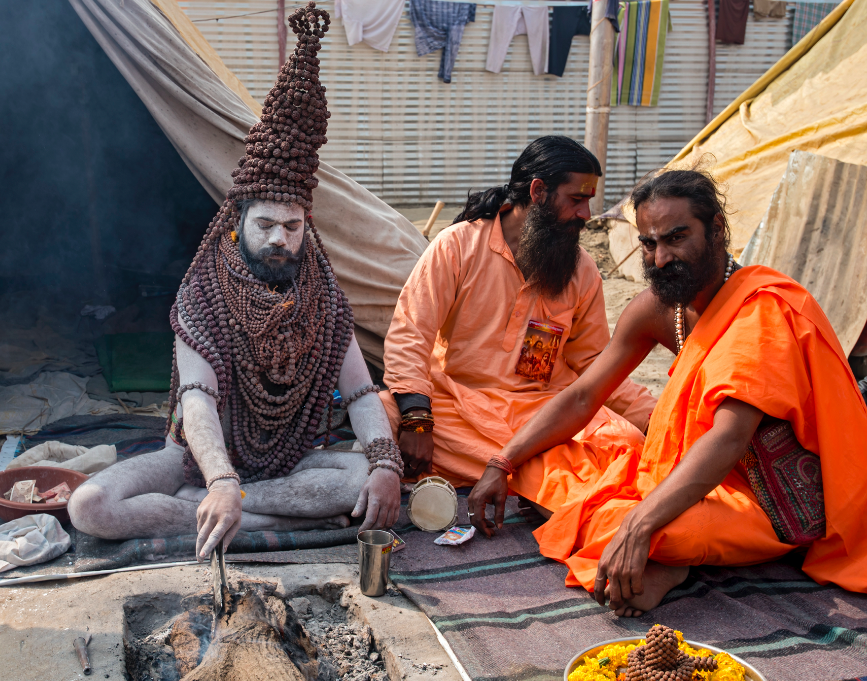
We missed this dramatic start to the mela but even so the Kumbh turned out to be head turner of a spectacle on several levels. There was blinding colour and non-stop action everywhere. Sari and dhoti-clad pilgrims with bundles on their heads walked barefoot or in flimsy slippers with little children in tow. They stoically braved the bitter cold as did sadhus in flowing orange robes, foreheads daubed with sandalwood paste, who mingled with naga babas, jean-clad city slickers, believers and cynics…
Kumbh, the great leveller, moksha, the ultimate prize
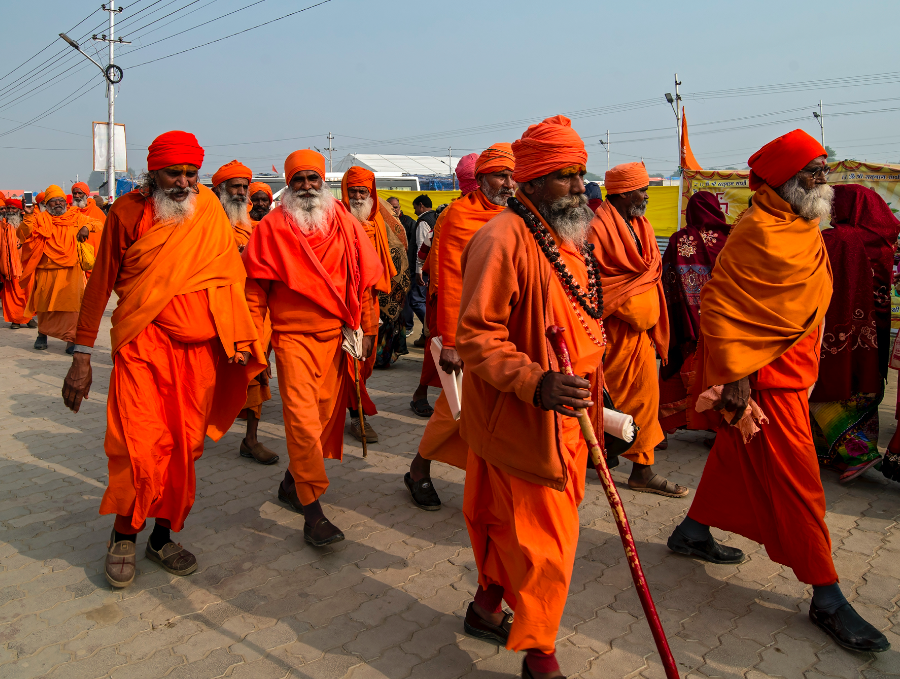
Many had trudged from far-flung villages yet had a spring in their step; the very old with rheumy eyes confirmed that they had attended multiple Kumbhs, hoping that it would ease their passage into the next world. Indeed, the Kumbh is a great leveller as the haves and have nots, humble villagers, yuppies and the rich in flashy cars… all footslog there, propelled by an overriding desire to take a dip in the confluence of the Ganga, Yamuna and the mythical Saraswati rivers. The dunking would throw up the ultimate prize – moksha – a blessed release from the eternal cycle of life and death. As an octogenarian, leaning on his son’s arm, said: “If I die tonight, I will be liberated!”
The crowds mingled with peddlers hawking sun glasses, floral garlands, rudraksh malas, chillums (joints) and sundry things, while barbers who cut the flowing locks of holy men offered to chop ours for Rs 100! All of them coursed along the 45-sq km of mela grounds like a river in spate. Indeed, a temporary mega city had sprung up to accommodate the multitudes, and was dotted with 1,22,500 toilets!
Loudspeakers blared, urging devotees to move towards the bathing ghats; names of wives and children separated from their families were constantly being announced so that they could be re-united with their loved ones, waiting anxiously in the ‘Lost and Found Tent’. The sound of pounding drums and conch shells, and the low hum of Vedic mantras was a soundtrack that thrummed in the background. The air was scented with incense and it was like stepping into a gigantic temple. In one tent, a couple of holy men danced like they were in a trance, while nearby, weary pilgrims sat in a row like obedient children, waiting to be fed by good Samaritans who were ladling dal and rice onto outstretched platters.
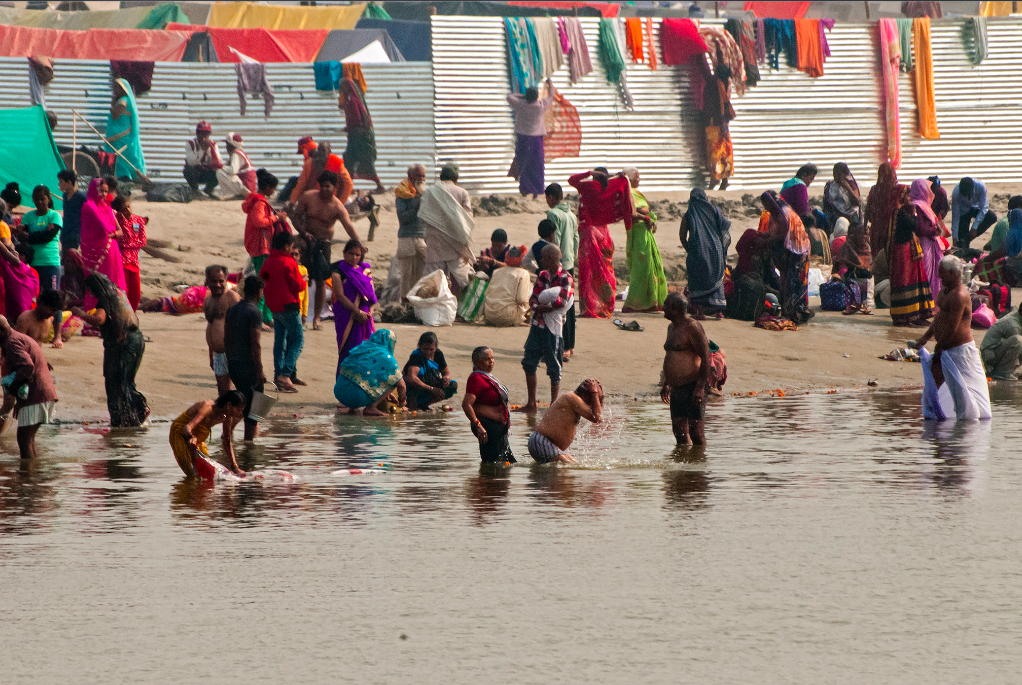
We were mere tourists in search of searing colour and fiery optics, but found ourselves being swept away on the Tsunami-like tide of devotion, buoyed by the knowledge that we were part of a spiritual carnival, the largest peaceful gathering of human beings on earth. Our attempts to view it solely through the prism of our viewfinders proved futile, so powerful was the pull of the mela where the burning intense eyes of holy men, and the innocent simplicity of the believers yanked us back to an ancient time, the origins of this spectacle itself.
The story of the Kumbh is embedded in cosmic time; a time when the Devas and Asuras set aside their eternal differences and churned the oceans with the help of a giant serpent to retrieve the nectar of immortality. When the ocean, after many false starts, finally yielded its prize, the two sides reneged on their fragile truce, and resumed hostilities. In the scuffle that took place, a few drops of nectar fell in the rivers that flowed through Prayagraj in Uttar Pradesh, Nashik in Maharashtra, Ujjain in Madhya Pradesh and Haridwar in Uttarakhand. Every three years, when the planets are auspiciously aligned, the Kumbh is celebrated in rotation between these four locations. It is believed that those who bathe in the river waters at the time, attain moksha.
The bath to beat all baths!
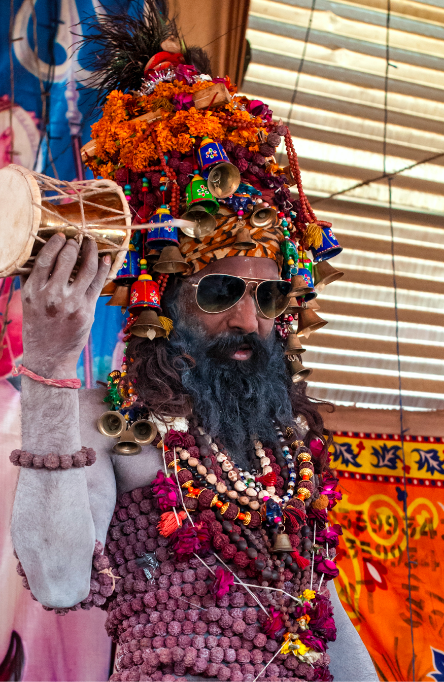
A mind-boggling five crore people had gathered to participate in the Mauni Amavasya Snan (4th February 2019 – the day of our visit). On this day, Rishabh Dev, considered the first sage, broke his long vow of silence and bathed in the holy waters at the sangam. Devout Hindus believe that the planets were aligned in the most favourable way on February 4th. (During the Kumbh, there is generally a total of three Shahi Snans)
The Mauni Amavasya Snan was in a way one of the photogenic climaxes of the Kumbh when the naga babas, dreadlocks flying, stampeded into the water in the wee hours of the morning; the mighty splashing in the timorous half-light, bodies and faces glowing with droplets of water, all had an unmistakeable aura of divinity and magic. Devotees, with eyes turned heavenwards, had gathered on the banks of the sangam and in boats, waiting for their turn to plunge in. After the naga babas, the holy men of the 13 akharas (religious groups) and their followers, took a dip, marching, humming and dancing along the way … it all resembled a surreal ballet un-scrolling on a giant stage.
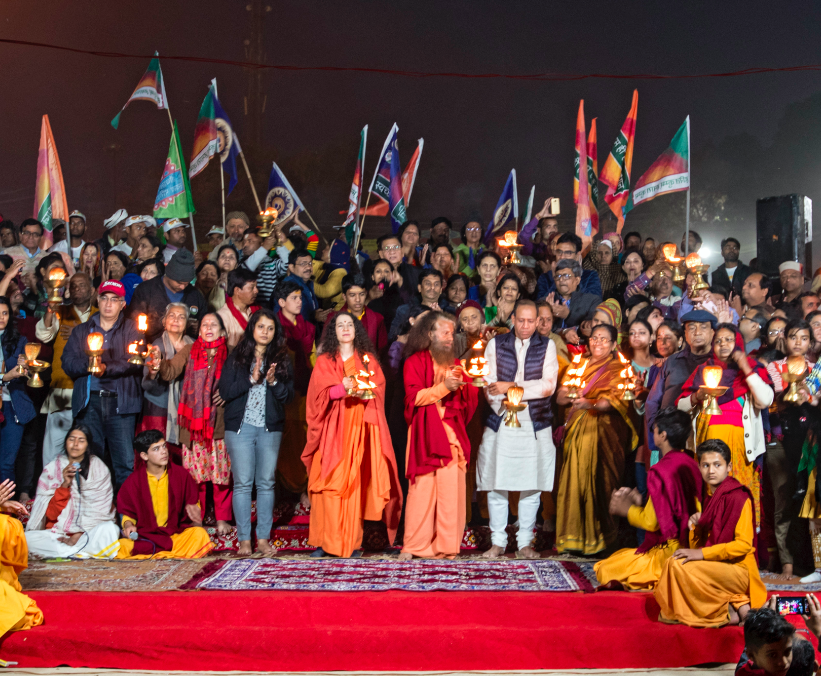
Soon the pilgrims dove in – women in their saris, kameezes and even thermals – splashed around like mythical mermaids, shivering in the early morning chill, and emerging to deftly don fresh garb, wringing out their long wet tresses, faces radiating like they were new borns! Indeed, there are no boundaries at the Kumbh; nothing is private as there is a collective desire for moksha. Post a dip, many sat on the banks of the sangam, lips moving silently in prayer; seeming to see the light within and staying open to this most moving of experiences. Did they perhaps feel a sense of oneness with the rest of humanity just as we did?
We splashed our faces with holy water even as we had an epiphany – the Kumbh makes you feel insignificant in the vast and eternal scheme of things; and your troubles seem to become a mere chimera. “Let the spirit of the Kumbh reach inside you; take it in and let it heal and transform you,” Swami Chidanand of Parmarth Ashram in Rishikesh had said when we attended his soulful aarti at the Kumbh. “There is a sangam inside us too. Dip into the sangam of introspection and you will find yourself.”
The Kumbh is all about attaining oneness – of mind, body and soul – and hence, this congregation has become widely associated with the naga babas, holy men who have gone beyond the limitations of their bodies and are supreme examples of mind over matter. They emerge from their caves in the Himalayas to be at the fair, and are perhaps the protagonists of the mela – not only because of their rather outré or unconventional appearance, but because they epitomise men who have overcome the challenges of the physical world. Some have stood on one leg for decades; others can stay submerged in water for hours, or lie buried in sand for days and emerge alive…
The Juna Akhara has the maximum number of naga babas and one of them flaunted sunglasses that hid a fiery hypnotic gaze. He sat with a 22kg crown on his head and his body was smothered in hundreds of rudraksh malas, all of which reportedly weighed 70 kg! Kabutar baba flaunted a pigeon, while another brandished a trishul at a gent who got too close to him to take a photograph; and a third chased a tourist and threatened him with a stick and a peacock feather because he did not drop some coins in his bowl, which was his charge for clicking his photograph! Another took out a bunch of snakes, draped them around his neck and started to dance. Pilgrims fell at their feet for their blessings as the holy men fed and stoked a sacred fire.
When we left the Kumbh, we felt ignited; the sangam reminded us that though the Ganga, according to the scriptures, is the younger sister of the Yamuna, once the two rivers merge, the river is called the Ganga. “How beautifully Yamunaji surrendered to oneness,” observed Sadhvi Bhagawati Saraswati of the Parmarth Ashram at the aarti held at the Kumbh. “The sangam reminds us to merge our minds, bodies and souls with the divine. When you leave the Kumbh, make a pledge to preserve the oneness of creation.” And that is exactly what we did!
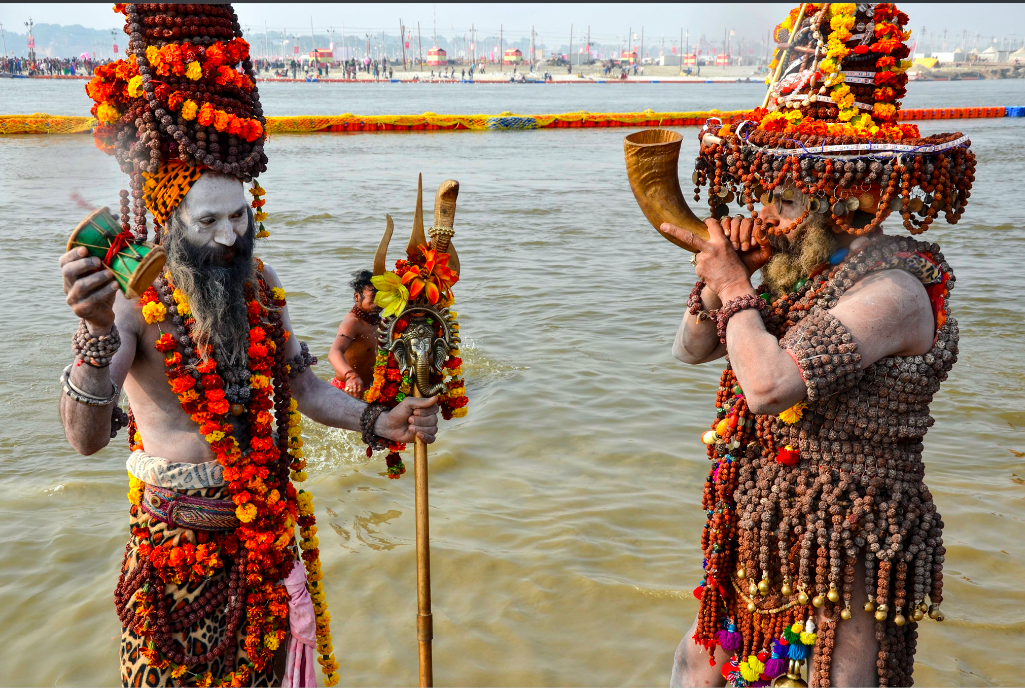
The Nitty Gritty
The 2019 Kumbh which started on 15th January and ended on 4th March, saw unprecedented crowds. An integrated command control centre and 1,100 CCTV cameras kept vigil on the tidal waves of people that streamed into and out of the grounds. There were 43 fire stations, 15 sub-fire stations, 40 fire watch towers, and 96 control watch towers. Over 100 ambulances were on standby, while vending zones, food stalls and 35 outlets of Café Coffee Day fed the gargantuan appetites of the multitudes. Parking space for over five lakh people had been created as well.

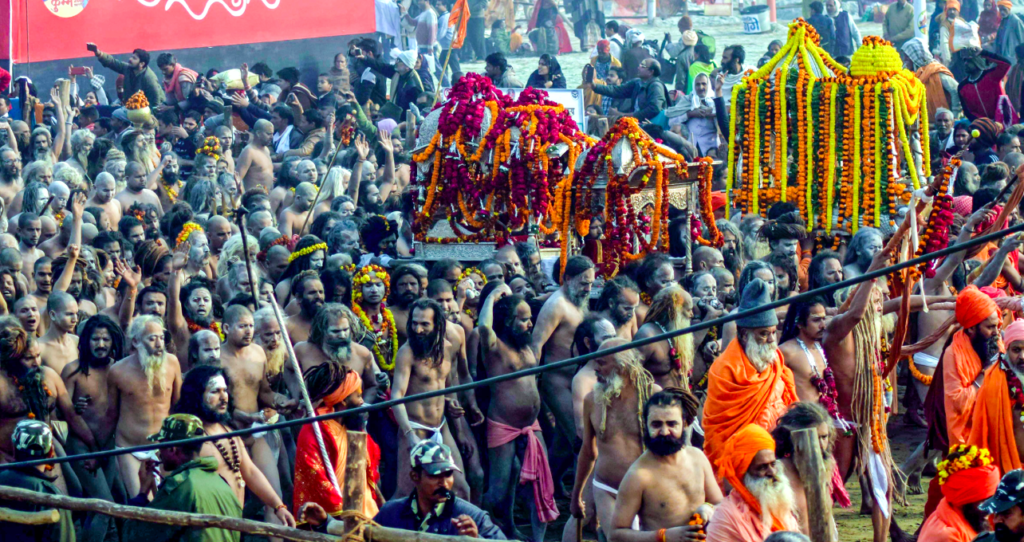
 [/column]
[/column]